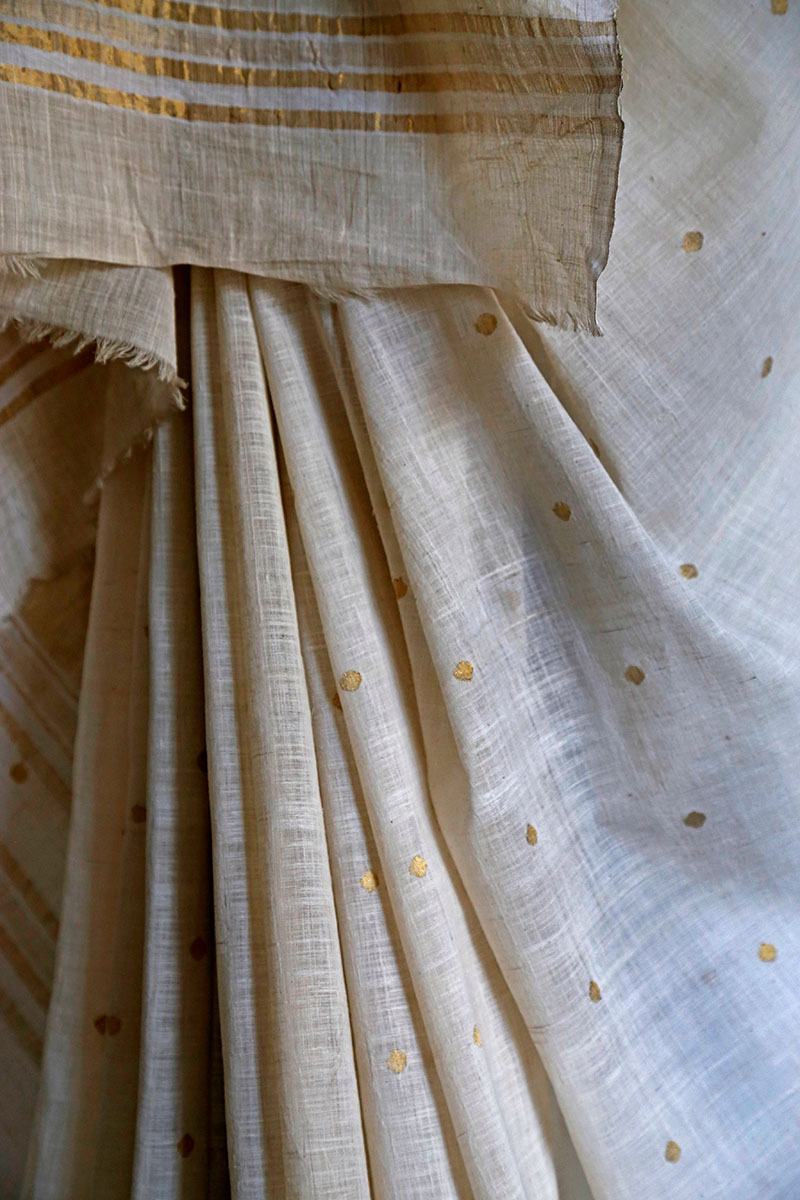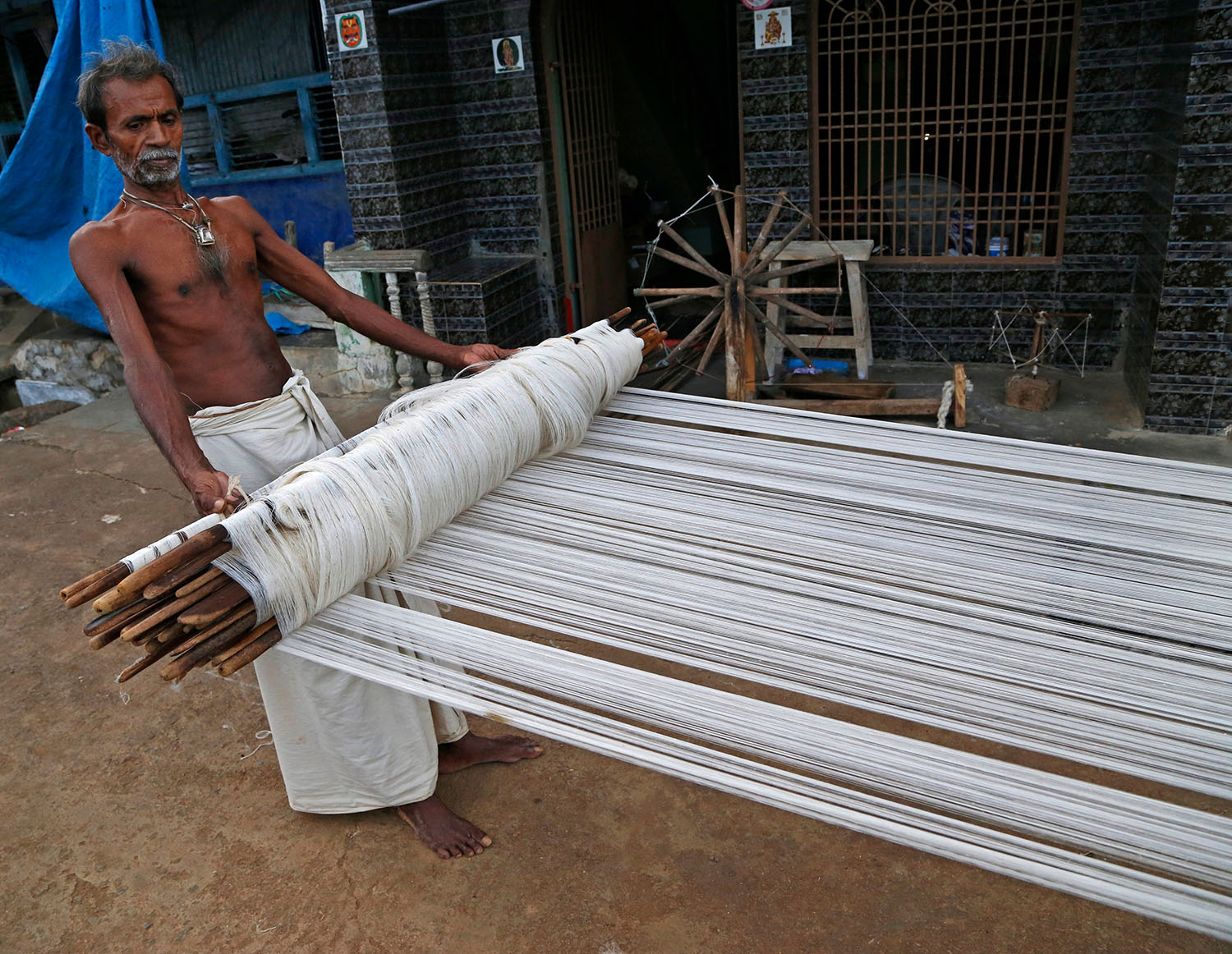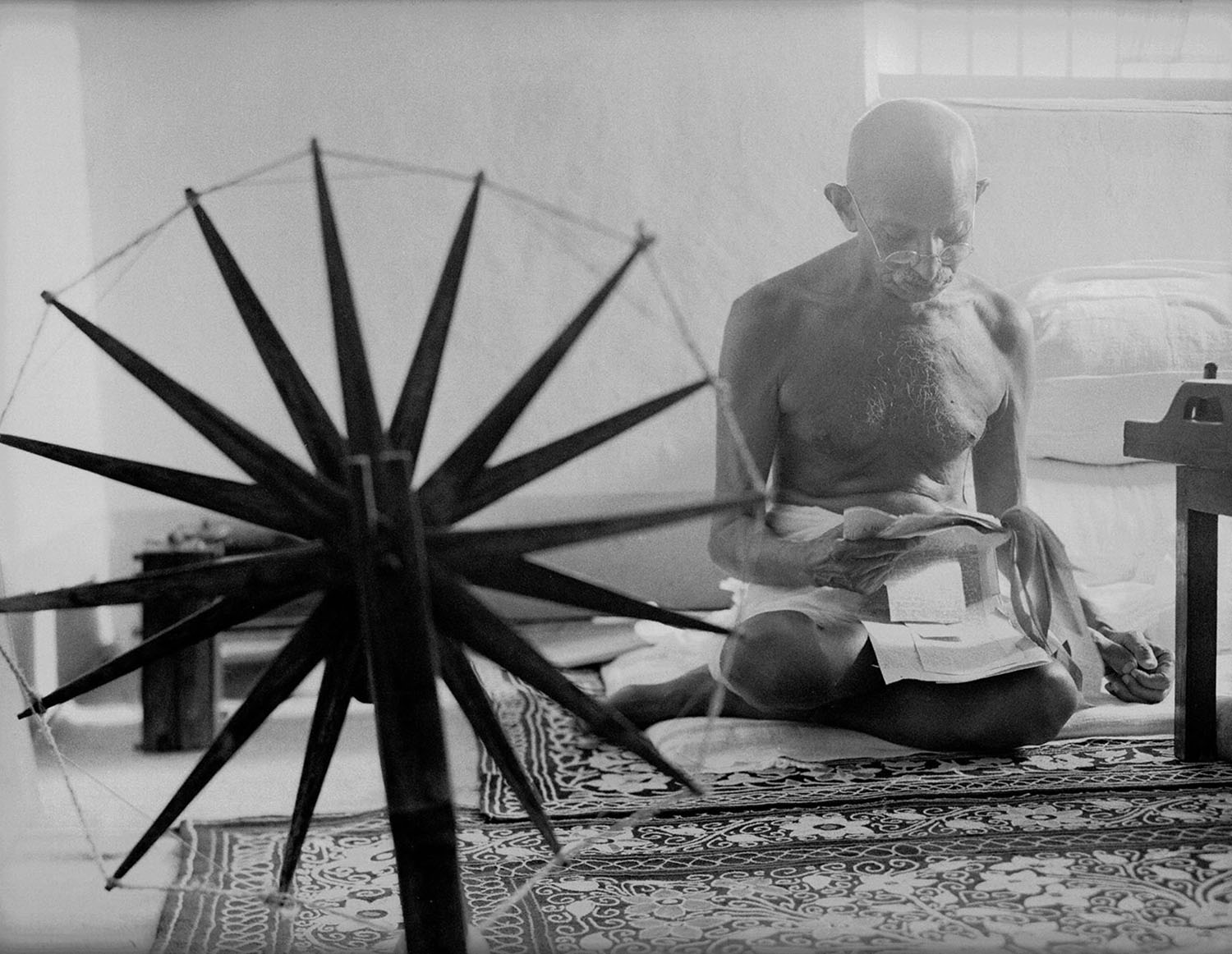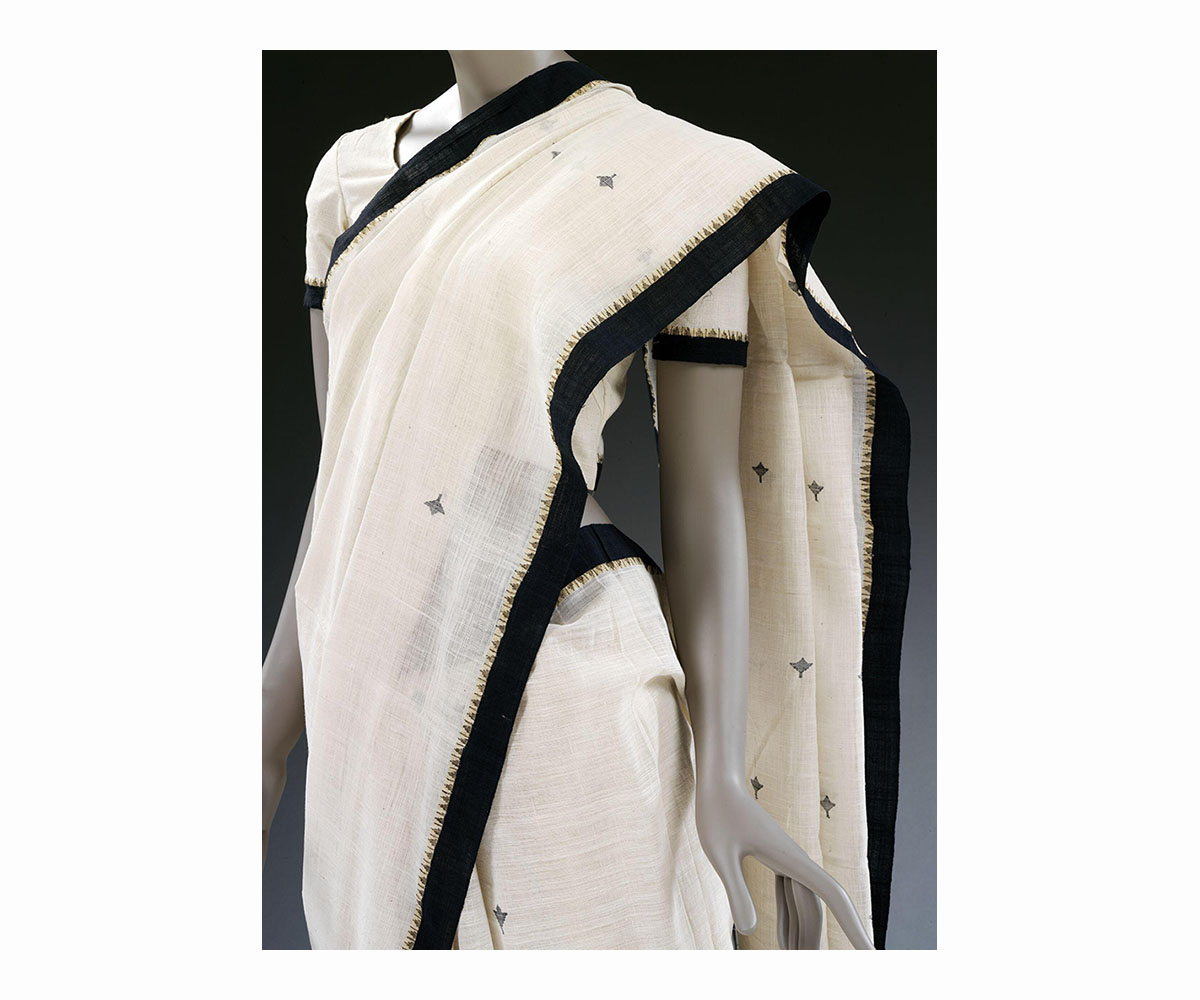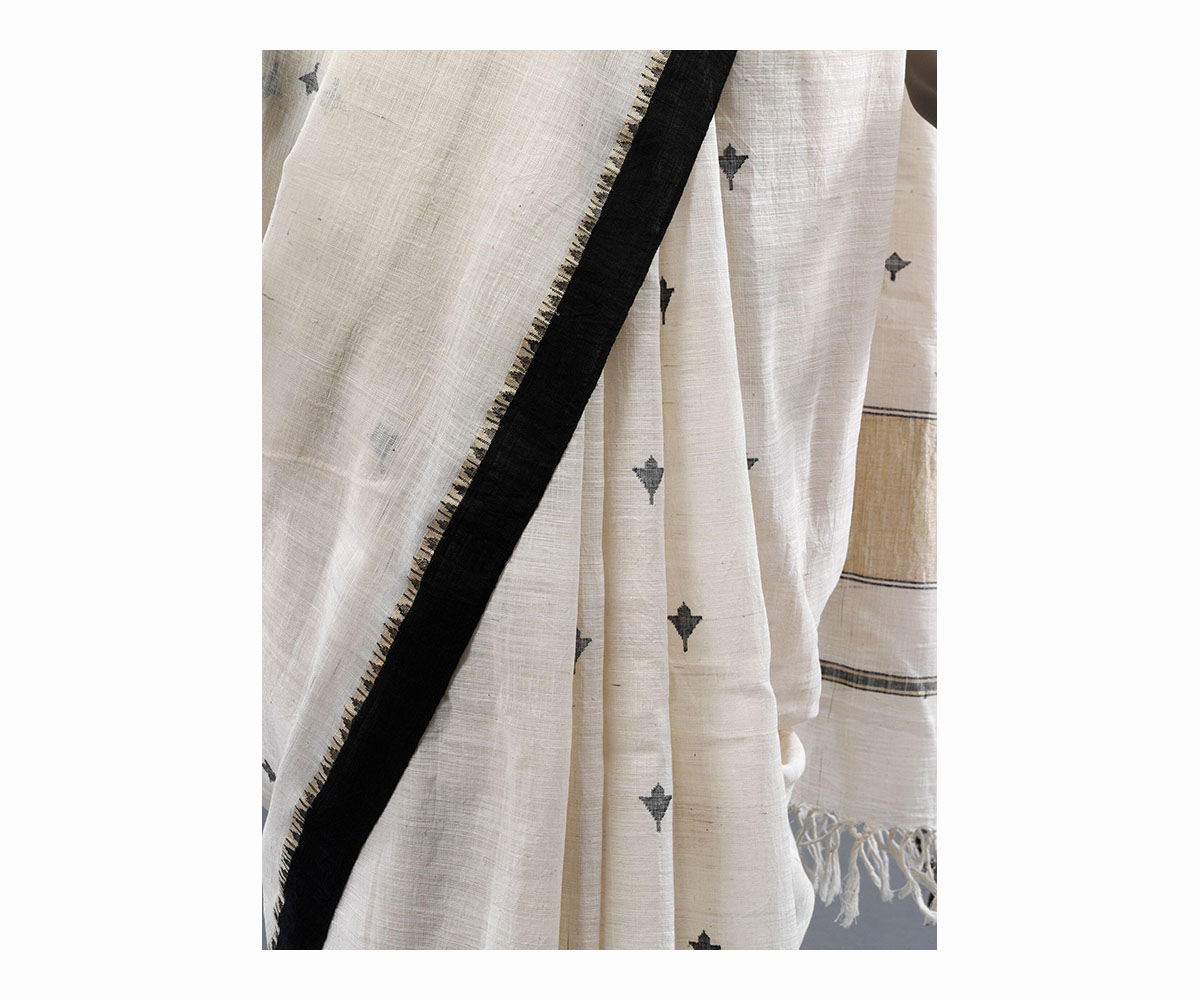ARTICLE
Khadi
Khadi is usually produced in a plain weave, but can also be produced for fine muslin apparel which may be striped, chequered, dyed or plain-woven. These stripes are introduced into the texture of khadi through the systematic insertion of multiple warps or wefts. Heavier woven varieties of khadi are often used to make khol (quilt covers) and chaddar (coverlets). Plain weave khadi is used as a foundation for sarees, often with additional textural features such as jamdani. These khadi-patterned weaves are mostly produced in Andhra Pradesh, Tamil Nadu, Karnataka and West Bengal.
Khadi remains closely linked to the legacy of Mahatma Gandhi, who endorsed the production of the fabric as a way of boosting rural employment as well as boycotting the profusion of British-made goods in the Indian market. From 1918 onwards, images of Gandhi using a charkha (or spinning wheel) to make khadi began to circulate and, under his leadership, the fabric became an emblem of the Swadeshi Movement and of Indian resistance to British rule. The popularity of the fabric grew and supporters of the freedom movement began to not just make, sell and buy khadi clothing, but also used the fabric to decorate and furnish their homes. In 1922, the Indian National Congress set up a Khadi Department, which was followed by the establishment of the All India Khadi Board two years later.
The overall attitude of championing khadi has endured over time. Governments and policies, in line with Gandhi’s vision, have continued to endorse and popularise the fabric. In 1953, the Indian government set up the All India Khadi & Village Industries Board and, in 1956, it established the Khadi and Village Industries Corporation (KVIC) to continue the national promotion and production of the home-spun textile. The KVIC is one of the largest textile retail networks in the world, with over 57,000 employees.
Although the KVIC has facilitated numerous technological changes in the pre-spinning and spinning processes, production of khadi remains a slow and arduous process when done completely by hand. Today, there are only a handful of regions where khadi is made by hand, from start to finish. These areas include the Madhubani district of northern Bihar and the Srikakulam district of eastern Andhra Pradesh. In most regions, the spinning process has become completely mechanised. The mechanised, and consequently faster, methods of making khadi have enhanced the volume and speed of fabric production, resulting in an increase in earnings. However, deviating from the hand-made forms of production has led to a decline in quality as compared to traditional khadi fabric and yarn.
Despite a decrease in demand, khadi remains an important symbol of the Indian independence movement and continues to support large populations of rural artisans across India even today.
Bibliography
Our website is currently undergoing maintenance and re-design, due to which we have had to take down some of our bibliographies. While these will be re-published shortly, you can request references for specific articles by writing to hellomapacademy@map-india.org.




